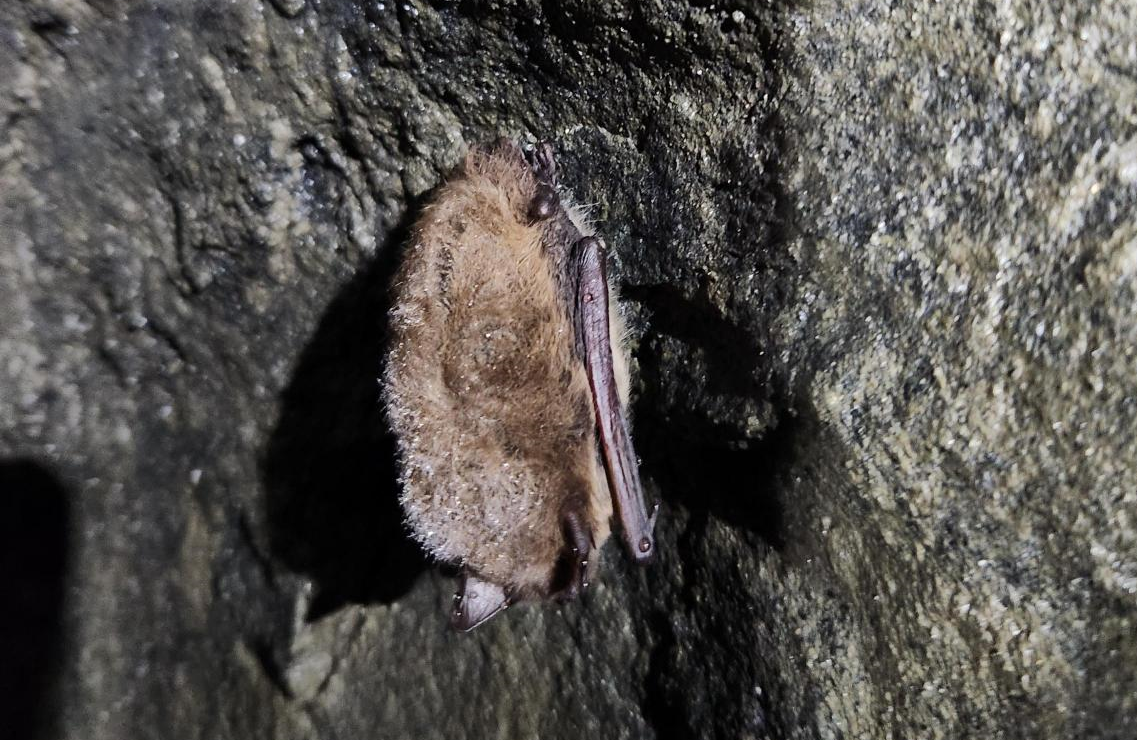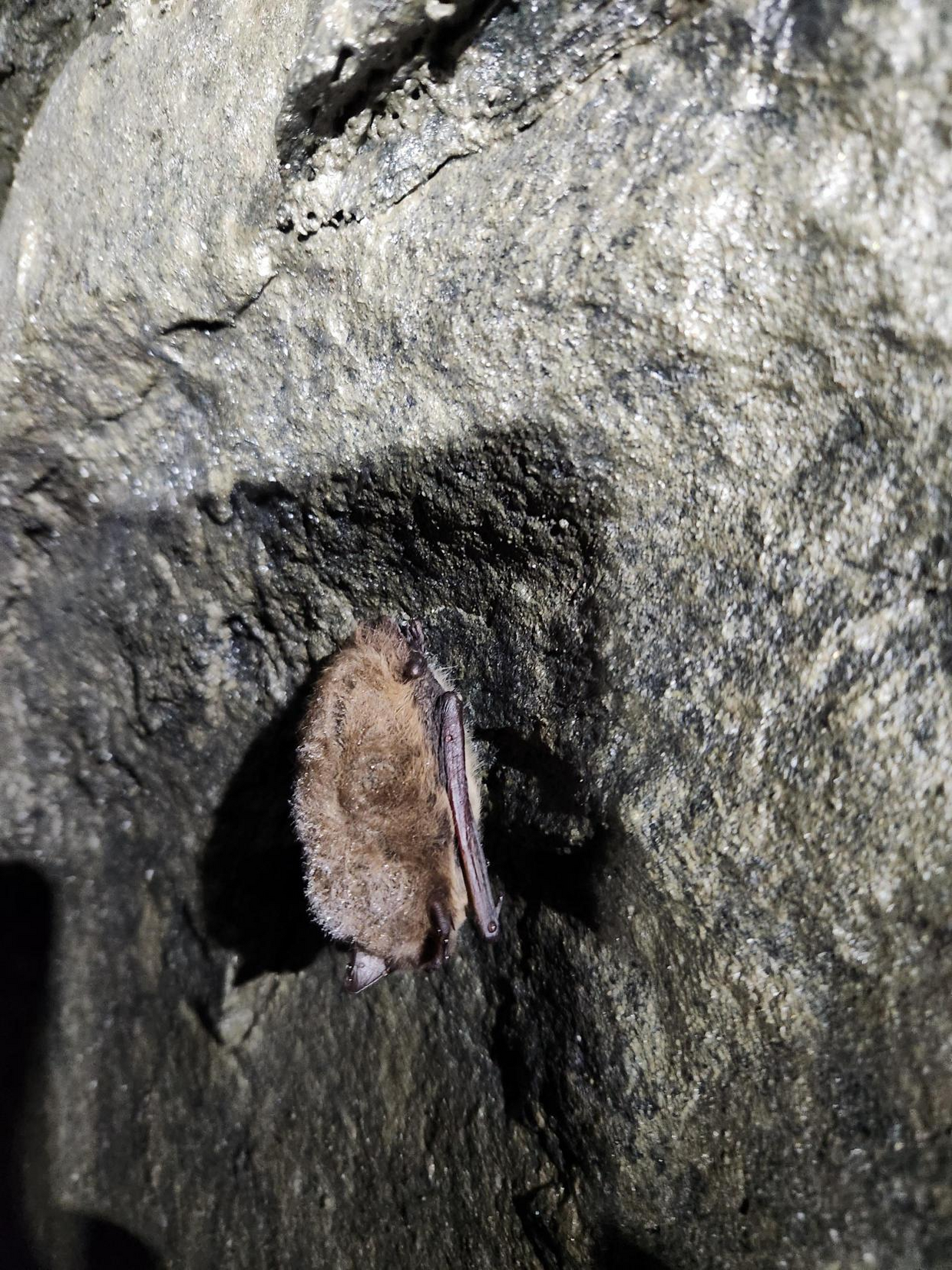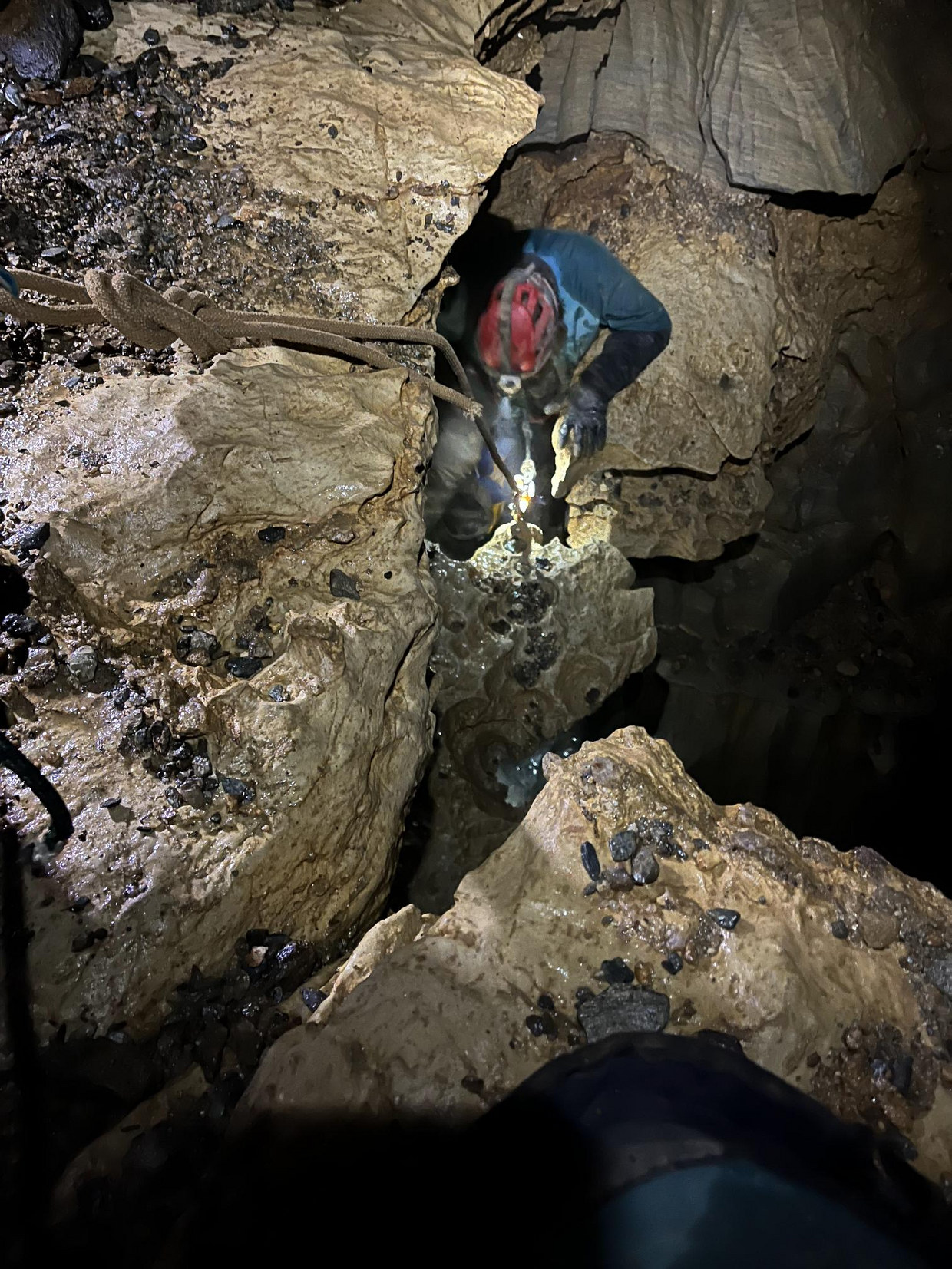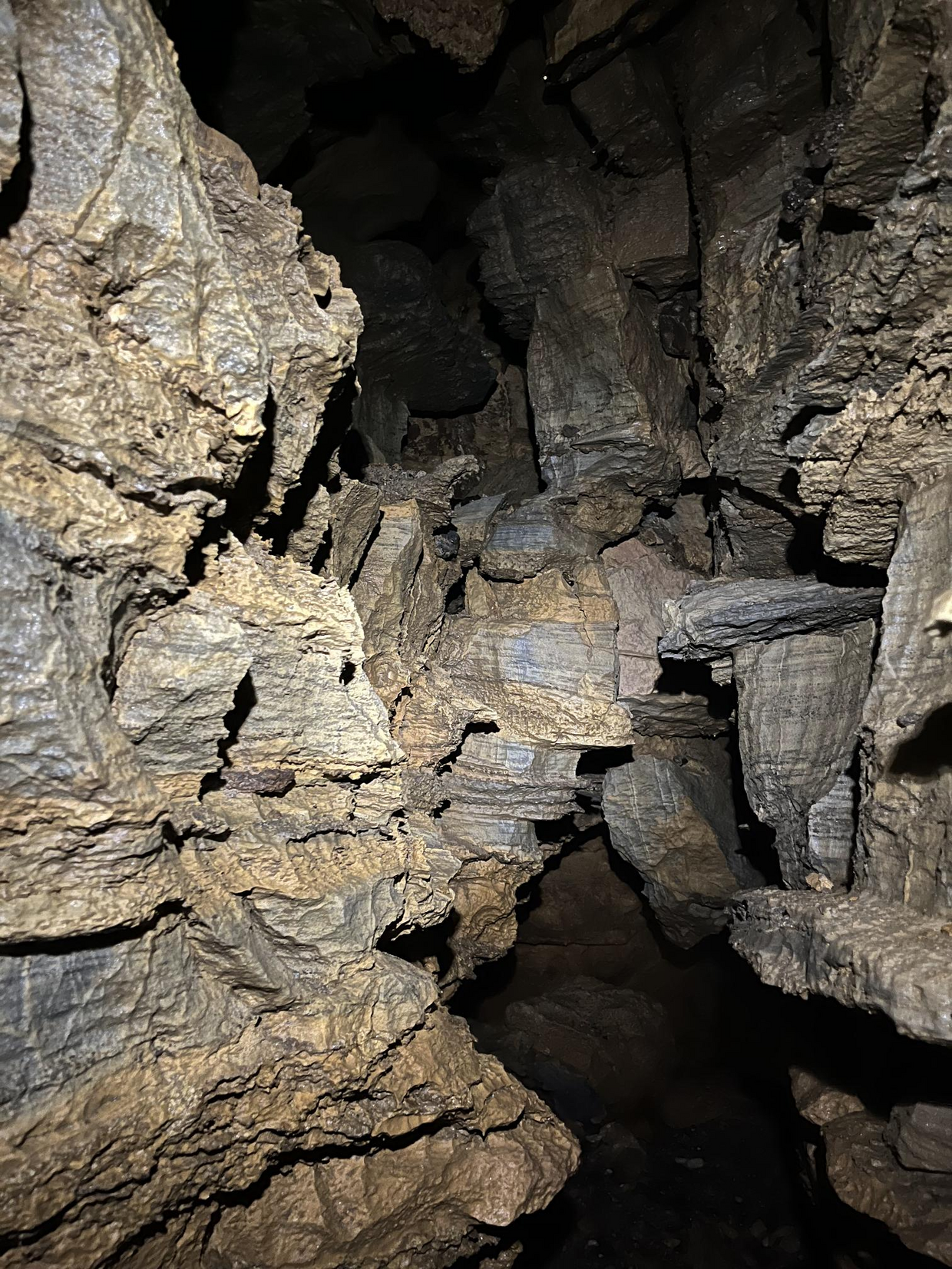- Division of Fisheries and Wildlife
Media Contact
Media Contact, MassWildlife

This winter, MassWildlife biologists and staff surveyed abandoned mines and natural caves in western Massachusetts looking for hibernating bats. To do this, biologists carefully entered the mines and caves in late winter to identify and count individual bats, check for signs of disease, and check the security of the mine or cave. This year, MassWildlife partnered with the Department of Conservation and Recreation (DCR) to explore a new property and found two previously unknown bat hibernation sites!
By surveying bat populations for the past 45 years, MassWildlife has been able to estimate the size of bat populations in Massachusetts. These winter surveys showed that bat populations had been slowly increasing until the emergence of white-nose syndrome in Massachusetts in the winter of 2008/2009. This deadly fungal disease can make bats wake up from hibernation during the winter, causing them to burn through their essential fat reserves. White-nose syndrome is spread mostly through bat-to-bat contact and is especially detrimental for species who hibernate close together in caves or mines. Because of white-nose syndrome, five of the nine bat species that occur in Massachusetts are listed on the state endangered species list.
By surveying bat populations, our biologists have found that white-nose syndrome seems to have peaked in Massachusetts in terms of mortality. Populations appear to have stabilized for those species found in caves, but their numbers remain very small. Although the peak has passed, bats with white-nosed syndrome are still found each year in Massachusetts and it remains one of the top threats these animals face. Data collected from these surveys help our biologists determine how to best protect endangered bats in Massachusetts and help them recover.
Why bats are important to MA
Bats play a critical role in our ecosystem and add to the biodiversity found in Massachusetts. Although you may not see bats often, they are working hard at night at their primary role—eating insects. They provide organic, effective, and free pest control as the primary predators of night-flying insects, including the disease-carrying insects we may find in our backyards. Bats also help farmers by eating insects who cause crop damage, allowing farmers to use fewer pesticides.
How you can help bats
- Build a bat house: One of the best ways you can support bat conservation is to put up an artificial roost, like a bat house. Bat houses give females a safe, warm place to raise their young. Since most female bats only have one pup each year, bat populations grow very slowly. Additionally, due to habitat loss and degradation, it is becoming harder for bats to locate natural roost sites to raise their young. Installing a bat house on your property can provide a safe environment for bats, while protecting your yard from pest insects, like mosquitoes, moths, and beetles. Bat houses can be purchased, or you can build your own. You can find a guide to bat houses on MassWildlife’s website, including plans for building a bat house, installation tips, and advice for attracting bats to your bat house.
- Report bat colonies: If you observe a group of bats (10 or more) this summer, report it to MassWildlife using this form.
- Create habitat for bats: Bats seek shelter under peeling bark on dead trees. If you have dead or dying trees on your property, leave them standing as potential roost sites for bats. You can also create a bat-friendly landscape in your backyard by adding night-scented flowers and water features such as a pond.
- Reduce pesticide use: Pesticides make it difficult for bats to find healthy food to eat. Insecticides can cause bats to go hungry from the lack of insects available.



